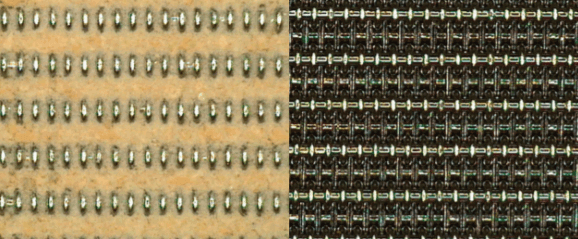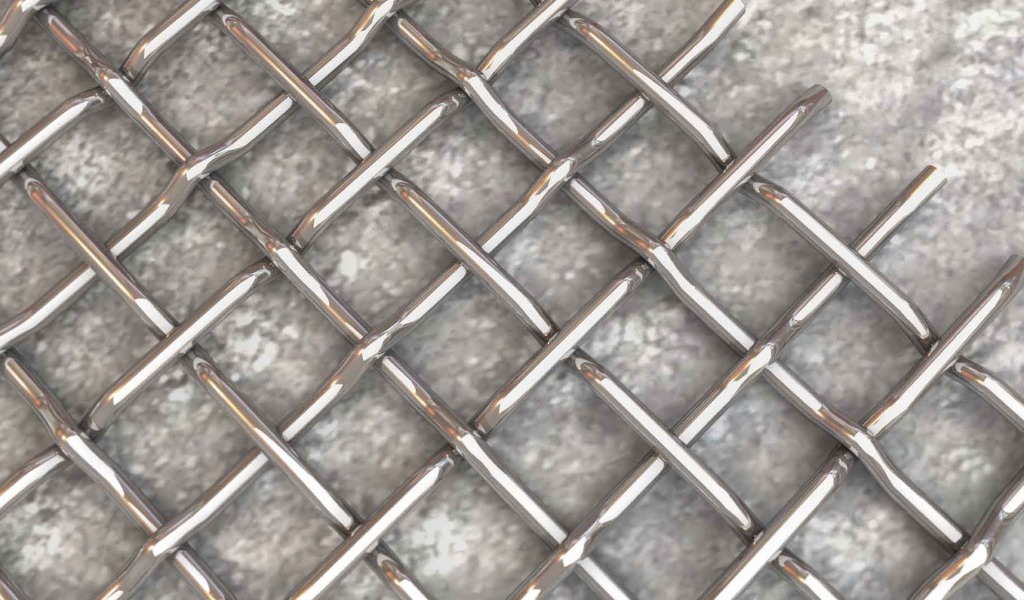Woven Wire Mesh Filters: Preventing Clogs To Ensure Peak Performance
Clogs in a woven wire mesh filter can cause an entire operation to come to a screeching halt. Flow rates will drop, pressure will build up, and costly downtime will soon follow.
In many industries, woven wire mesh filters are the foundation of a cohesive operation. When these filters become clogged, the system becomes vulnerable to ineffective operation, costly downtime, and even product contamination.
Fortunately, you can minimize clogs and ensure long-lasting filtration with the right mesh selection and proper maintenance strategies.
For over 150 years, W.S. Tyler has been a leader in innovation in the wire mesh industry, providing filtration solutions that promote a cleaner, safer world.
With that, this article will break down the common causes of clogs in a wire mesh filter, their impact on filtration efficiency, and the best practices to prevent them. You will learn:
- The concerns faced when wire mesh filters become clogged
- The factors that can cause cause your wire mesh filter to become clogged
- How a clogged wire mesh filter can impact system performance
- How to prevent your wire mesh filter from becoming clogged
- How you can design a wire mesh solution that combats clogging
The Concerns of Clogging in Woven Wire Mesh Systems

Clogging can significantly impact the system's overall efficiency in filtration systems that leverage woven wire mesh performance. Pegging and blinding from particle accumulation will cause dips in filtration capacity.
As a result, you may face a reduction in flow rates, spikes in pressure drop, and increased energy expenses.
This can disrupt the purification and treatment processes for water. In the food and beverage industry, this can compromise product safety. If your process involves manufacturing pharmaceuticals, any signs of clogging mean you can't achieve the precision you need for peak drug purity. With oil and gas processes, blockages can hinder operations and lead to damaged equipment.
For this reason, preventing clogs in your filter system is key to optimal productivity, industry standard compliance, and reduced operational costs.
What Causes Clogs in Woven Wire Mesh Filters?
There are various factors that can lead to flow-restricting clogs in your woven wire mesh filters. These factors include:
- Particle Buildup - The occurrence in which solid particle, such as dust, dirt, or other sediment, accumulates on the surface of the mesh and, eventually, the pore openings of the mesh
- Oil and Grease Adhesion - Clogs caused when viscous substances coat the mesh surface, trapping debris as it flows through your system.
- Biological Growth - When biological matter, such as bacteria, mold, and algae, develops and alters the pore openings of the mesh.
- Chemical Reactions - Clogs in which corrosion and scaling reduce the porosity of the mesh over time.
That said, selecting the wrong mesh specifications for your particular application can accelerate concerning clogs. Using an inadequate weave type, wire diameter, or aperture size may cause excessive particle retention or inadequate filtration, altering the integrity of the mesh openings.
How Do Clogs Impact the Performance of Woven Wire Mesh Fitlers?
Clogs in woven wire mesh filters can lead to frustrating disruption in system efficiency, reducing flow rates and slowing production. As the mesh openings become more restricted, spikes in pressure drop ultimately make your equipment work harder, resulting in excessive energy consumption and increased operational costs.
The strain exerted on your filter leads to a shortened lifespan; thus, frequent replacement associated with costly maintenance is required.
Depending on your process, clogs can leave you vulnerable to product contamination, leading to regulatory violations and product recalls. In high-stakes applications, clogging can lead to system malfunctions or shutdowns, causing costly downtime and, more importantly, safety concerns.
It is key that you proactively address clogs. Doing so will ensure peak performance, regulatory compliance, and financial loss prevention.
Preventing Clogs in Woven Wire Mesh Filters
Preventing troublesome clogs in your woven wire mesh filter system requires a combination of ideal specification selection, effective maintenance strategies, and system optimization. These best practices will work to ensure optimal efficiency, extend the lifespan of the filter, and minimize downtime.
First, choosing the correct mesh specification is key. The weave type, wire diameter, and aperture size, in particular, must be tailored to your process to ensure adequate filtration and prevent excessive particle retention.
You will also want to implement a regular cleaning schedule. Backflushing, ultrasonic cleaning, and chemical treatments will help remove debris before blockages can affect your system.
Looking to perfect the way you clean your wire mesh filter? Read the article below and build the perfect routine:
Pre-filtration strategies can also be used to proactively prevent clogs. Installing elements such as coarse filters or sediment traps will work to reduce the load on finer mesh specifications by capturing larger particles upfront.
If localized clogging is a concern, you can improve the flow design of the filter. This will help ensure fluids are evenly distributed across the surface of your wire mesh filter.
Combating Clogs With the Right Woven Wire Mesh Design
You must methodically select the right alloy, weave type, and mesh specifications to design a woven wire mesh filter that delivers optimal performance and prevents clogs. This tailored approach will ensure efficient filtration, reduce maintenance, and improve system performance.
Woven wire mesh is typically constructed from 300-series stainless steel due to its balanced performance. That said, a wide range of alloys, from brass to Hastelloy, can be used based on the corrosion resistance and durability you need.
Weave type also plays a crucial role in preventing clogs. For example, plain weaves uniform openings that work great for general filtration. Twill weaves provide heightened durability for applications that subject the filter to higher pressure loads. Dutch weaves offer tighter pore structures that afford enhanced particle retention.
When it comes to mesh specifications, mesh opening size and wire diameter must be balanced. Balancing these two specifications will ensure optimal filtration capacity without restricting flow.
Maintain Operational Integrity With Pristine Wire Mesh Filters
Clogging is an inevitable challenge when working with woven wire mesh filters; however, its impact can be minimized with proactive strategies. Preventative measures such as proper mesh design and scheduled cleaning will help keep your filter system running smoothly.
Unfortunately, well-maintained wire mesh filters can still experience performance issues when imperfections alter the characteristics of the mesh. The smallest of inconsistencies, such as broken wires or irregular wire spacing, can compromise the precision of the filter.
Here at W.S. Tyler, our mission is to help keep your filter systems running efficiently by sharing our experiences over the past 150 years and providing tailored solutions that deliver long-term performance.
To gain insight into the common wire mesh imperfections you should look out for to keep your mesh performing at its best, check out the following article:
About Ronnie Brown
Ronnie is the Content Writer for W.S. Tyler and has four years of experience as a professional writer. He strives to expand his knowledge on all things particle analysis and woven wire mesh to leverage his exceptional writing and graphic design skills, creating a one-of-a-kind experience for customers.




